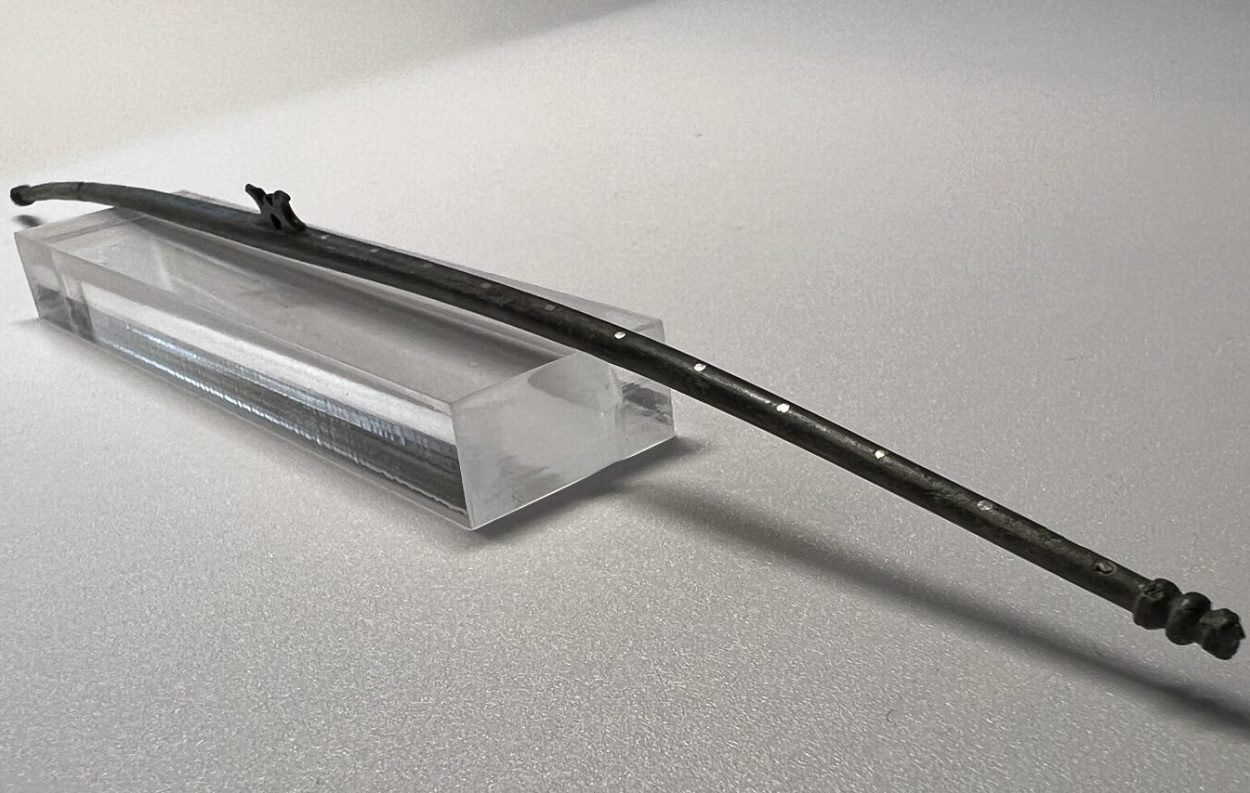Archaeologists excavating at Milecastle 46 on Hadrian’s Wall have discovered a rare Roman steelyard beam.
Milecastle 46 was a small fortlet north of Magna (Carvoran Roman Fort) on Hadrian’s Wall, located near the village of Greenhead in Northumberland, England.
Over the centuries, the stone from the fortlet and Magna were robbed for the construction of nearby Thirlwall Castle, a 12th-century castle built as the family home of the Thirlwall family and to guard against raids by the Scottish.
Very little remains of the fortlet today, except for a slight, turf-covered platform and earthworks visible via aerial photography.
Recent excavations of Milecastle 46 are part of a 5-year project by the Vindolanda Trust to study Magna and the surrounding landscape. The project has been supported by the National Lottery Heritage Fund with a grant of £1.625m.
Excavations of the top layers at the milecastle have revealed a rare steelyard beam made from copper alloy that dates from the Roman period. The steelyard beam measures 22cm’s and has a decorative integral central fulcrum hole to accommodate a suspension chain.
One end of the beam was finished with a typical triple bevel design and suspension hole from which a weighing pan was hung with chains, while on the other end were counterweights to be used as an official balance for weighing goods.
A feature of this steelyard is that from the fulcrum to one end of the beam are eleven evenly spaced, tiny circular silver inset points set 10mm apart, used as markers for moving the measuring weights along the arm.
According to the researchers: “A portable steelyard of this size and calibre could have been used by a proficient Roman tax official, trader or merchant for weighing small, high value items passing through the milecastle at Magna. Trading posts like this would have worked both ways, taxing goods entering and leaving the borders of the Empire. The Roman army and Emperor taking their own cut from this potentially lucrative trade.”
Not every milecastle was well-suited for the task, but milecastle number 46 at Magna proved to be an exceptional choice. It was strategically positioned at a junction where three major Roman roads intersected: the Stanegate, the Maiden Way, and the Military Road. This ideal location facilitated efficient tax collection and control while also providing convenient access to the northern regions beyond the Wall.
During the later Roman period, significant trade occurred as cut silver and glass artifacts were sent northward out of the empire to gain the loyalty of northern tribes. This practice might have unintentionally contributed to an increase in raids from beyond the frontier into the province of Britannia.
Header Image Credit : The Vindolanda Trust





